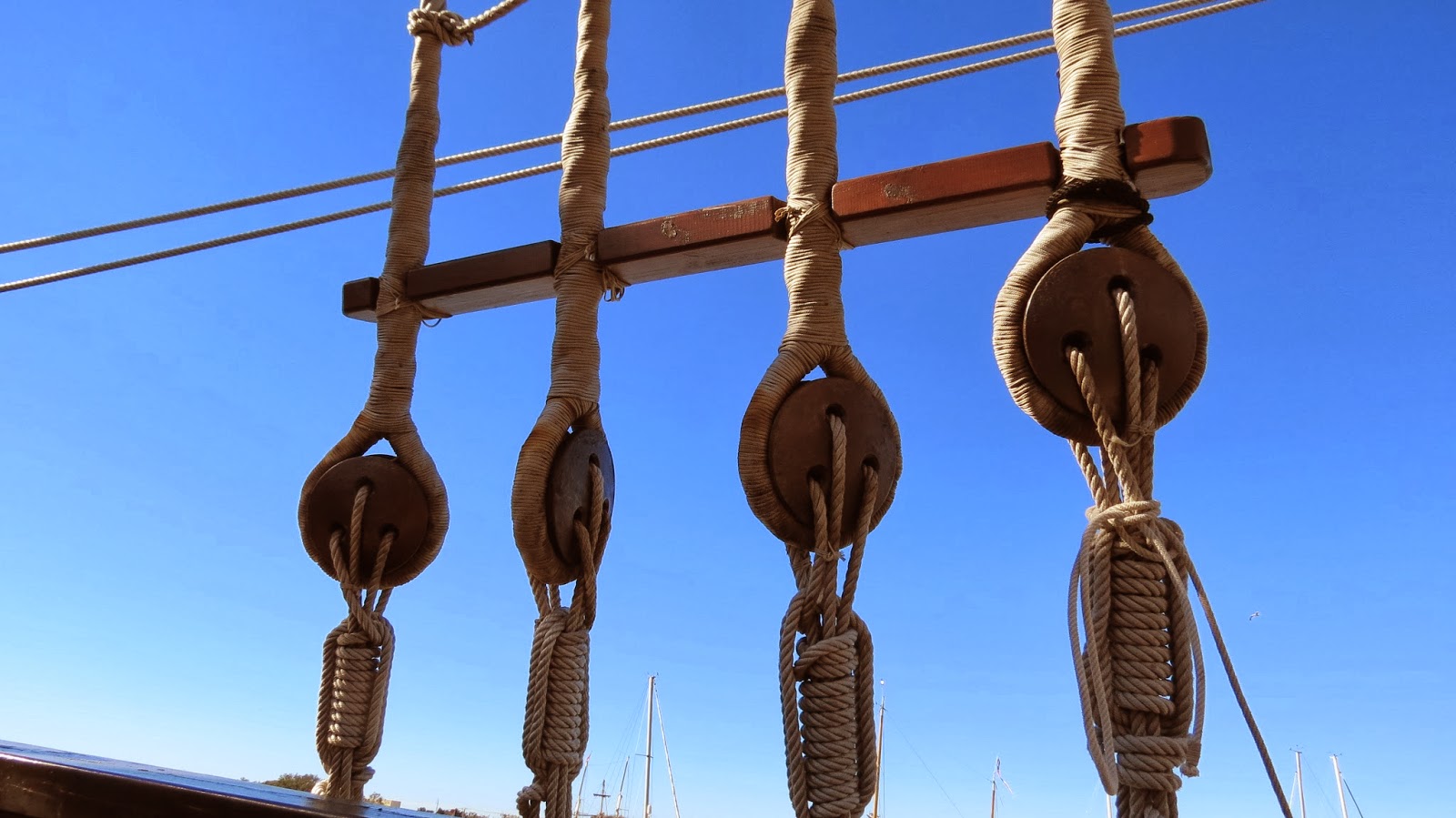The galleon we toured in St. Augustine had miles of rope. Each has a specific purpose and a specific name. Some are lines; some are bobstays; some are bowlines; some are buntlines; some are cables; some are cordage; some are earings; some are downhauls; some are halyards; some are hawsers; some are lanyards; some are manropes; some are mainsheets; some are outhauls; some are ratlines; some are shrouds; some are stays.
Because there were so many lines, it was important to keep them organized. You couldn't have them getting tangled.
This is a closeup of one of the many deadeyes that were used all over the ship. B read that they, along with lanyards, reduce the stresses on masts, rigging and hull. Deadeyes were replaced by turnbuckles in more modern shipbuilding. Deadeyes were so named because they were thought to resemble the eye sockets and nose cavity of a human skull.
These large wooden beads surrounded the mainmast acting as rollers to assist in the raising and lowering of the yard.
Rope was even used to measure ship speed. It was measured in knots pulled from the spool as the rope was dragged in the water.
We learned that there is really a lot to know about sailing ships ---and that we actually know very little.













No comments:
Post a Comment